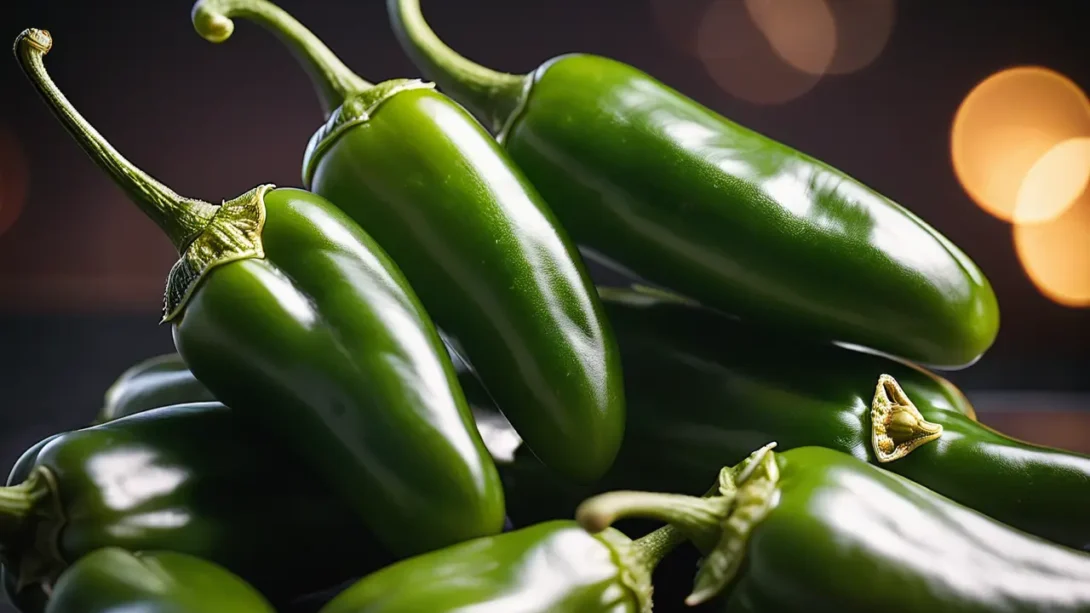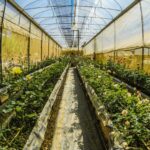Jalapeño peppers, with their perfect balance of heat and flavor, have secured a pivotal place in cuisines around the globe. From the smoky depths of chipotle in Mexico to the zest of a fresh salsa in the United States, jalapeños ignite dishes with their distinctive spice. Yet, amidst their culinary acclaim, a question arises: Which country stands as the leading producer of jalapeños? This article embarks on a journey to uncover the global landscape of jalapeño production, spotlighting the countries that contribute most significantly to the supply of this beloved pepper.
The Jalapeño Pepper: A Culinary Staple
The jalapeño pepper, a medium-sized chili pepper known for its warm, burning sensation, has a rich history rooted in the heart of Mexico. Named after the city of Xalapa in Veracruz, where it was traditionally cultivated, the jalapeño is a variety of the Capsicum annuum species. It serves not only as a fundamental ingredient in Mexican cuisine but has also woven its way into culinary traditions worldwide, celebrated for its versatility in both fresh and processed forms.
Characterized by its bright green color, which turns red as it matures, the jalapeño pepper boasts a wide range of uses, from being sliced and served atop nachos to being stuffed with cheese or meats. Its presence in cooking spans various forms, including raw, smoked (known as chipotle), pickled, and incorporated into sauces and spices, showcasing its adaptability and the universal appeal of its moderate heat.
Global Production of Jalapeños
Jalapeño production is a global endeavor, influenced by a myriad of factors including climate, soil quality, and market demand. Optimal jalapeño cultivation requires warm temperatures and well-drained soil, conditions found in several regions across the world. However, the scale of production varies significantly from one country to another, shaped by both historical ties to the pepper and the contemporary demands of global cuisine.
Leading Jalapeño Producing Countries
While numerous countries contribute to the global supply of jalapeños, certain nations stand out for their voluminous production and integral role in the pepper’s proliferation.
Mexico: The Birthplace of Jalapeños
As the historical cradle of the jalapeño, Mexico not only lays claim to the pepper’s origins but also remains its largest producer. Jalapeños are deeply embedded in the fabric of Mexican culture and cuisine, representing a symbol of national culinary heritage. Various regions within Mexico, particularly those with warm climates and fertile soil, such as Veracruz and Chihuahua, are renowned for their jalapeño cultivation. These areas leverage centuries-old agricultural practices alongside modern techniques to meet both domestic and international demand for the pepper.
The significance of jalapeños in Mexico transcends mere numbers; it reflects a tradition that honors the pepper’s versatility and heat. The following sections will delve deeper into the contributions of other leading jalapeño producing countries, including the United States, and explore the challenges and future trends in jalapeño production on a global scale. By understanding the journey of the jalapeño from local fields to global tables, we gain insight into the agricultural practices and cultural significance that define its production.
The United States: A Major Consumer and Producer
The United States emerges as another key player in the jalapeño market, not only as a major consumer but also as a significant producer. States such as Texas, California, and New Mexico lead in jalapeño cultivation, capitalizing on their favorable climates to supply both national and international markets. The versatility of jalapeños has seen them become a staple in American cuisine, embraced in everything from fast food to gourmet dishes, reflecting the country’s melting pot of culinary traditions. The United States also contributes to the innovation in jalapeño production, with agricultural research focusing on developing disease-resistant and higher-yield varieties to meet growing demand.
Other Notable Producers
While Mexico and the United States dominate, other countries also play vital roles in the global jalapeño supply. Nations like Spain, India, and China have expanded their jalapeño cultivation in response to increasing demand, each bringing unique cultivation practices and challenges to the table. These regions contribute to the diversity of jalapeño varieties available on the global market, catering to a range of spice tolerances and culinary preferences.
Challenges in Jalapeño Production
Despite the robust global demand for jalapeños, producers face several challenges that can impact yield and quality. Climate change poses a significant threat, with erratic weather patterns and increasing temperatures affecting traditional growing regions. Pests and diseases, such as the jalapeño wilt and bacterial spot, also threaten crops, prompting ongoing research into more resilient jalapeño strains. Additionally, the labor-intensive nature of jalapeño harvesting requires sustainable practices to ensure the well-being of workers and the environment.
The Future of Jalapeño Production
Looking ahead, the future of jalapeño production appears promising, driven by technological advancements and a growing emphasis on sustainable agriculture. Innovations in hydroponics and vertical farming offer new avenues for jalapeño cultivation, potentially reducing water use and allowing for year-round production in non-traditional environments. Moreover, the global appetite for spicy foods continues to rise, suggesting that demand for jalapeños will remain strong. Producers and researchers are increasingly focused on sustainable practices, from organic farming to integrated pest management, to ensure that jalapeño production can meet future demands without compromising environmental integrity.
Conclusion
The journey from the fields of Mexico to the global stage highlights the jalapeño pepper’s enduring appeal and the complex interplay of factors that govern its production. Mexico stands at the forefront, not only as the birthplace of the jalapeño but also as its largest producer, closely followed by the United States. As challenges such as climate change and pests loom, the resilience and adaptability of jalapeño producers worldwide will be crucial in sustaining this culinary staple. The continued growth in jalapeño production reflects not just a demand for its piquant flavor but also an appreciation for the cultural heritage and agricultural expertise that bring this vibrant pepper to tables around the world.



